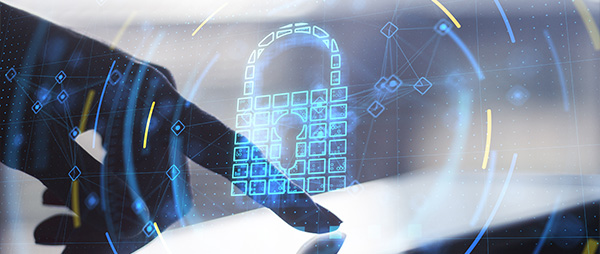IoT for sustainability & an eco-friendly future
Advancing green horizons: IoT for sustainability in the modern world
The Internet of Things (IoT) is changing how we tackle some of the most pressing environmental challenges of our era. It’s not only helping us stride towards a smarter planet; it’s paving the way for a sustainable future. From reducing energy consumption and carbon emissions to conserving natural resources and minimising our environmental footprint, IoT solutions are at the forefront of green technology innovations. These deployments improve energy efficiency, reduce fuel consumption, and create a positive impact on both our planet and human health, all whilst addressing the negative impacts of traditional practices.
The rise of green technology & IoT solutions
In sustainability, green technologies and IoT solutions are increasingly becoming synonymous with progress. IoT’s role as an enabler of sustainability is evident across various sectors, from optimising soil moisture and crop growth in smart agriculture, to designing energy-efficient practices and reducing energy costs in smart buildings.
By leveraging data from sensors, IoT technology enhances operational efficiency, allowing us to significantly reduce the environmental impact of energy sources and consumption. But how does this translate to IoT helping the environment?
Empowering environmental efforts with IoT
How can light pollution be reduced with IoT
The advent of IoT technology has also introduced innovative solutions to combat light pollution, a growing concern that affects our view of the night sky, the natural behaviour of wildlife, and our overall health. Through IoT sensors, cities and communities are able to monitor and manage light intensity in real-time, ensuring that they only turn their lights on when necessary. This helps reduce energy consumption and contributes to the preservation of natural darkness in the night skies.
Enhancing ESG goals through IoT innovations
IoT helps businesses meet big goals for the environment, society, and how they run. It gives them the information they need to use less energy and resources. This helps them to meet regulations and most importantly, improve their overall impact on the planet.
Building sustainable IoT solutions
Developing sustainable IoT solutions requires a thoughtful approach that balances scalability, cost, and security with environmental considerations.
Technological & methodological explorations: IoT in sustainability
The integration of the Internet of Things (IoT) into sustainability initiatives is not just about deploying more devices. It involves a complex interplay of advanced sensor technologies, diverse connectivity options, and sometimes even the sophisticated use of artificial intelligence (AI) and machine learning (ML) which help with the processing and analysis of the data these devices generate.
Understanding these technologies and methodologies is crucial for harnessing IoT’s full potential to drive sustainability outcomes.
Sensor technologies
Sensors are at the heart of IoT’s contribution to sustainability. They range from basic temperature and humidity sensors to more complex soil moisture sensors and air quality monitors.
Sensors are used to collect detailed environmental data, which is foundational for informed decision-making in sustainability efforts. For instance, in agriculture, soil sensors can measure moisture and nutrient levels to optimise irrigation and fertilisation, reducing water and chemical usage. In smart buildings, occupancy sensors and ambient light sensors ensure that energy is used efficiently, lighting, heating, or cooling spaces based on real-time requirements rather than fixed schedules.
Sensors are becoming increasingly more sophisticated, offering higher precision, greater reliability, and lower energy consumption. Their deployment in various environments, from urban landscapes to remote agricultural fields, showcases the versatility and adaptability of sensor technologies in addressing diverse sustainability challenges.
IoT connectivity options
The effectiveness of IoT in sustainability also depends on the connectivity being used to transmit data between sensors, management platforms, and end-users.
These options vary widely, from traditional Wi-Fi and cellular networks to more specialised IoT networks, including eUICC connectivity and LPWAN technologies such as NB-IoT (Narrowband IoT). Each connectivity solution offers different benefits in terms of range, bandwidth, power consumption, and cost, making them suitable for different IoT applications.
For example, in environments where cellular data is readily available, M2M SIM cards will be sufficient for most smart applications. However, in remote agricultural settings where power consumption and long-range connectivity are paramount, NB-IoT may be a more appropriate option.
Artificial Intelligence & Machine Learning
The role of AI and ML in processing IoT data is transformative, turning raw data into actionable insights. These technologies can identify patterns and trends in the data that might not be immediately apparent to human analysts.
For sustainability, this means being able to predict energy consumption patterns in smart grids, forecasting weather conditions affecting agricultural outputs, or even detecting anomalies indicating potential environmental hazards.
AI and ML algorithms can also optimise operations without human intervention. For instance, in smart buildings, AI can dynamically adjust climate control systems to improve energy efficiency based on the predicted occupancy and weather forecasts.
Similarly, in smart agriculture, ML algorithms can analyse soil sensor data alongside historical crop yield data to recommend the most efficient planting, watering, and harvesting schedules.
Future trends & innovations in IoT & sustainability
The intersection of the Internet of Things (IoT) with sustainability is ripe for innovation, with emerging technologies and research areas continuously expanding IoT’s potential to contribute towards environmental and social goals. As we look to the future, several trends and innovations stand out for their ability to further enhance IoT’s role in sustainability.
Emerging technologies
Future applications of IoT in sustainability
Areas of research
Challenges & solutions in implementing IoT for sustainability
Implementing IoT solutions for sustainability presents several challenges, but ongoing efforts and innovations offer promising solutions.
FAQs
Conclusion: Navigating the future with IoT & sustainability
The use of IoT technology in sustainability efforts represents a pivotal shift towards a more efficient and responsible use of our planet’s resources. From reducing emissions and conserving energy to minimising waste and combating light pollution, IoT solutions offer a pathway to achieving significant environmental, social, and governance (ESG) goals.
As we continue to embrace digital transformation, the role of IoT in fostering a sustainable future becomes increasingly crucial. By implementing smart technologies and sustainable practices, we can ensure that our journey towards digital innovation also leads us towards a greener, more sustainable planet.
Don’t wait to make a difference. Join us in driving positive environmental change and shaping a greener future. Explore our IoT solutions today and find out how you can revolutionise your sustainability efforts.






